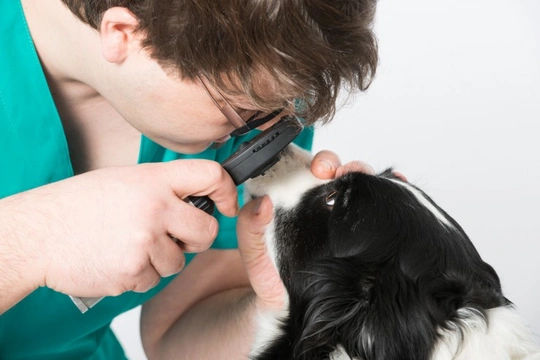
Six indications that your dog’s vision is failing
A common issue that affects a great number of dogs once they reach old age is a loss of acuity of their vision, and as well as older dogs, there are a range of conditions and problems that can lead to dogs of all ages losing their sight or suffering from problems with their eyes too.
Unless your know that your dog has a hereditary predisposition to certain eye problems and your vet has taught you how to be vigilant to the signs of them, it can be hard for the owner to know if their dog is losing their vision until it becomes quite advanced-and of course, the longer it takes to identify and diagnose an eye problem, the less effective the ultimate treatment for the condition may possibly be.
In this article, we will share six indications that your dog’s vision might be failing them, which can give you a head start on taking them along to the vet to get a diagnosis, find out if treatment is possible, and begin to resolve the issue. Read on to learn more.
Changes to the appearance of the eyes
If you notice any changes to the appearance of your dog’s eyes, however minor or slow developing, you should get this checked out by your vet immediately. Some progressive conditions that can lead to deterioration of the eyes can be treated or reversed, and catching them early enough is the key to effective treatment.
Conditions such as progressive retinal atrophy, cataracts, and a wide range of other disorders can all lead to changes in how the eyes look, such as by giving them a cloudy, blue-ish appearance or other changes. This will often be your first warning sign that something is amiss.
Poorer vision in dim lighting
When dogs first begin to lose their vision, it may only affect them in dim light or darkness, and they will otherwise appear to be normal when they are under bright lighting. If your dog seems reticent to go out or is more hesitant than normal in dim light such as in the early morning and evening, it is worth considering whether this might be due to problems with failing vision.
Inability to find toys and treats
If your dog who can usually chase down a toy or find a hidden treat within seconds suddenly seems to be having to work harder at it than normal or appears to run straight past their target without seeing it, it is entirely possible that this is the case.
Whilst every dog will have the odd off day when everything seems harder than normal, if your dog seems to be completely missing things that are right in front of them or they circle around a toy scenting for it rather than looking for it in order to find it, this may be one of the most subtle but clear indications that their eyesight is on the wane.
Overreliance on scenting
Once a dog begins to lose any one of their senses, they will begin to rely upon their other senses much more. The dog’s most powerful sense is their sense of smell, but their vision comes in in second place, and so losing or partially losing their sight will mean that dogs will have to compensate for this in other ways.
It is not always obvious to dog owners if their dogs are relying upon their sense of smell over sight more than normal, as dogs use their scenting ability so much anyway. But as mentioned above, if your dog seems to go right past something that they would usually be able to spot visually and instead do a lot of sniffing to track it down, they may be compensating for a loss of vision.
Pain or irritation with the eyes
Some canine eye conditions are more or less totally painless, and can lead to partial or complete blindness without causing your dog any pain or discomfort. Others, however, can be painful or irritating as well as leading to a loss of vision, and it is not always immediately obvious if your dog’s eyes are painful or bothering them.
Keep an eye out for signs that your dog’s eyes are causing them a problem, such as if they constantly paw at or bother their eyes, rub their faces and eyes against objects, squint, blink excessively, or appear to be in any pain.
Clumsiness and bumping into things
If nothing in your home or immediate neighbourhood changes during the time when your dog is losing their vision, your dog will usually compensate for failing eyesight by means of a combination of their other senses and their memories of where things are.
However, if you move things around or take your dog to a new area and they are continually bumping into things, tripping on steps, or are hesitant about moving, this too is likely to indicate a progressive loss of vision.



